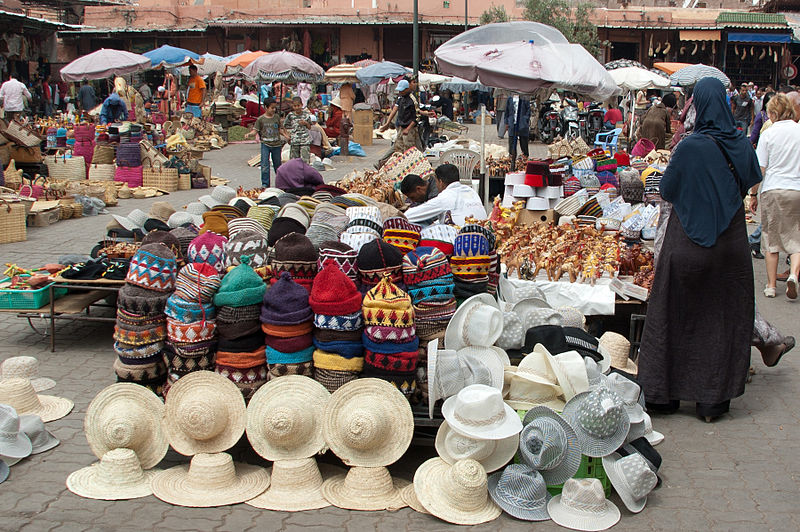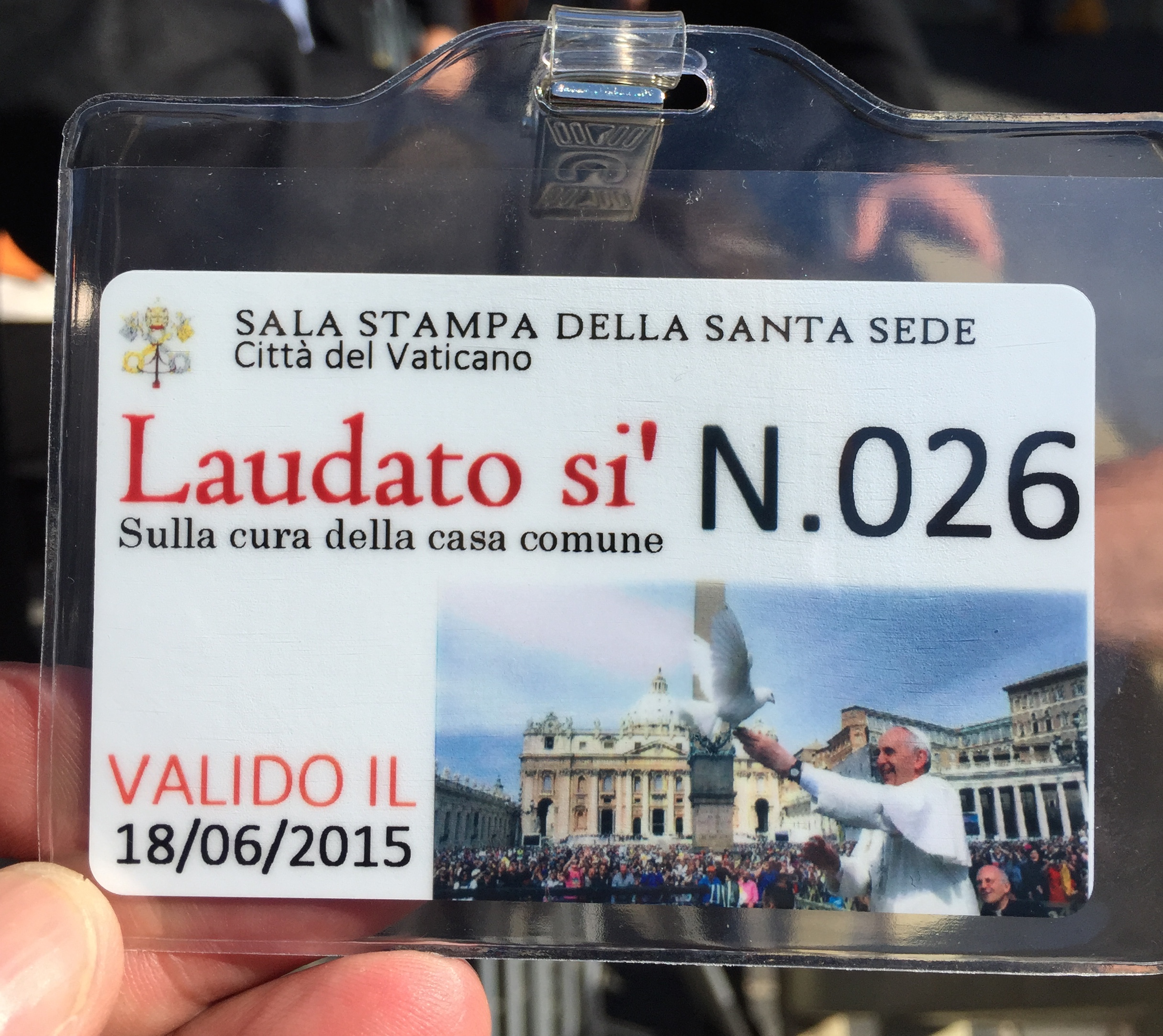
The first question I ask officials heading to Marrakesh, Morocco for this November's United Nations Climate Summit known as COP22: How do you top Paris?
"There is a lot of political momentum coming from Paris," answers Dan Bodansky, a climate adviser to the White House and a law professor at Arizona State University. "But will it actually lead to a dynamic where there are changes on the ground in terms of what countries are actually doing?"
That is exactly the sort of nuts-and-bolts pragmatic role negotiators hope COP22 will play après Paris.
The Paris Agreement is without question an historic achievement. World leaders authored the first-ever blueprint to broadly tackle climate change. The agreement was ratified globally with unprecedented haste and achieves the force of law this week, on November 4th, four years earlier than anticipated.
Meanwhile, more than 100 countries, including the U.S., China and India, agreed last month to dramatically limit the future use of hydroflourocarbons, a potent greenhouse gas used in air conditioners. Another climate victory was hailed.
But those headed to COP22 will emphatically tell anyone listening: Folks, we're not there yet. We're not even close. So COP22, the Conference of the Parties — running from November 7-18 — will need to top Paris in many very practical ways.
Creating an operations manual for curbing climate change
Marrakesh negotiators must get nuts-and-bolts meticulous about exactly how the world's nations will reduce carbon emissions; how we will adapt to more extreme weather events; where we will reduce deforestation and promote reforestation; how we will inspire innovative clean-energy solutions; and, maybe most importantly, how we will raise the trillions necessary to make the singularly vital planet-saving goal of Paris happen — keeping global temperatures from rising another 0.5 degree C by 2100.
"We need an operational manual for the Paris Agreement," Nick Nuttal, spokesman for the UN Climate Conference says from Bonn, Germany. "This is where Marrakesh needs to make a lot of progress. How will developed and developing countries report what they are doing? Transparency is key. We need to trust that your NDCs [nationally determined contributions] are being achieved."
If these initial voluntary carbon emission cuts — pledged in Paris — are not achieved, and then quickly toughened, particularly by developed nations, then the world faces the growing wrath of a destabilized climate system. Faster sea-level rise. More drought. More ferocious hurricanes and typhoons. And more climate-change refugees fleeing uninhabitable tropical regions, coasts and low-lying island nations.
Climate scientists agree that this is the price of waiting two decades to marshal the political will to approve the Paris Agreement, which commits 195 nations to a vastly reduced carbon future.
As a range of officials make clear, the pathway to that future remains undefined and unbuilt, thus raising the stakes in Marrakesh.
The role of forests
Nancy Harris is the research manager for the World Resources Institute's Global Forest Watch. In Paris, forests and their preservation through carbon offset programs like REDD+ (Reducing Emissions from Deforestation and Degradation) were recognized as crucial in absorbing and storing CO2 emissions in order to buy time while the world moves rapidly from burning fossil fuels to alternative energy sources.
"It's really nice to be working in global forests right now," WRI's Harris says from Washington, D.C. "The recognition of forests as a climate-change mitigation strategy — reducing emissions and increasing carbon sinks — is more visible. But right now it's all talk, and progress is being made too slowly."
Indonesia, for example, whose vast rainforests have been decimated for oil palm plantations over the past two decades, is waking up to the realization that its remaining forests can be worth a lot if left standing through forest-protection incentives like REDD+.
"Indonesia is in line to get a lot of money," says WRI colleague Fred Stolle, "but it has to get its act together. A billion dollars is sitting there for them. But the country doesn't have the political will [at present] to tackle deforestation. The hope is that the next generation in Indonesia will have the willpower to do something."
At the Woods Hole Research Center in Massachusetts, CEO Phil Duffy leads a group of scientists committed to forest preservation.
They've developed advanced techniques for measuring the amount of carbon stored in a particular forest to establish its value to qualify for REDD+ funding. The system works like this: a developed country such as Norway pays a developing country like Brazil or Peru to protect a swath of rainforest otherwise slated for clear-cutting for ranching, soy plantations or maybe mining. Early demonstrations with REDD+ have shown promise in Brazil — but scientific techniques for the precise measuring of forest carbon stores, like those being developed at Woods Hole, are vital to REDD+ success.
The threat of thawing permafrost
Duffy says his organization will be pressing two pragmatic goals in Marrakesh: identifying denuded or degraded tropical lands for reforestation, and promoting agricultural techniques such as no-till farming to retain and increase the carbon content of croplands.
He admits that this push by Woods Hole for more natural carbon sinks is extremely ambitious, especially in light of previous failed efforts. The recent Bonn Initiative and the New York Declaration on Forests pledged to regrow hundreds of thousands of hectares of forests globally, Duffy recalls: "Big deal. Everyone signed, high-fived and went home. Little has happened. Meanwhile, we are on target, yet again, for the hottest year on record."
What worries a scientist like Duffy more than anything is thawing permafrost in the Arctic. Human carbon emissions have now warmed the earth to the point that we have begun triggering the melting of permafrost — which contains vast sums of methane, a greenhouse gas more than 20 times as powerful as carbon dioxide.
If this thawing is not reversed, those soils will release tons upon tons of once-locked carbon into the atmosphere, acting as if scores of coal-fired power plants were operating in the Arctic.
"The climate experts on the National Security Council wanted a briefing on the Arctic," Duffy says. "I told them about the permafrost. I walked away feeling very discouraged. Not because they didn't believe me. They did. It's just that the policy responses were nowhere near adequate to the scale of the problem. We really need to build more public interest on this issue in terms of what needs to be done."
Money, influence and accountability
Beyond the COP buzz words of "mitigation" and "adaptation" lies a relatively new one: "loss and damage", a reference to on-going and future climate change harm in countries with virtually no carbon footprint — damage that cannot be dodged or adapted to. Think Typhoon Haiyan in the Philippines (one of the most intense on record), Hurricane Matthew in Haiti, and the ongoing drought in Malawi.
"The area of 'loss and damage' was a huge breakthrough in Paris," Julie-Anne Richards with Climate Change Advocacy tells me from London. "Many [developed countries] wanted to push it into [the] adaptation [category] so they didn't need to pay for it. That failed. It's part of the [final Paris] Agreement, but only on paper. Now we have to make the breakthrough real."
Richards says there needs to be a new and separate fund, stuffed with billions of dollars, to assist countries suffering climate change related loss and damage. The Green Climate Fund, for example, which aims to raise $100 billion by 2020, is reserved only for mitigation and adaptation efforts.
"We are looking at insurance opportunities," Richards says. "When a hurricane hits the Caribbean and winds go over a certain speed, a country will automatically be able to make an insurance claim. Haiti will get a pay-out from the (5-year-old) Caribbean Risk Insurance Facility because of Hurricane Matthew. But this whole area is brand new, and insurance companies are already saying things like sea-level rise are uninsurable."
At Marrakesh, Richards insists, funding for loss and damage must be a high priority.
One way to help assure that governmental promises get converted into real action, is for NGOs to closely monitor the negotiating process. With the urgency for progress so high, and with little time to waste, such monitoring at COP22 could be intense. Corporate Accountability International is an NGO with newly official observer status, and will be on the scene in Marrakesh as a watchdog. It will be ready to pounce on entities it believes have undermined progress in UN climate summits for more than 20 years — the fossil fuel industry and business lobbyists with close ties to transnational corporations.
"Groups like the Business Roundtable and World Coal Association, the very industries the UN has tried to rein in, are now seeking to undermine the Paris Agreement," Tamar Lawrence-Samuel, an attorney with Corporate Accountability International, tells me from Boston. "They will have direct access to negotiators in Marrakesh. As accredited business-interest NGOs, they will have legitimacy and access.
"This is a direct threat to the very spirit and mission of the Paris Agreement. Their only role should be to provide transparent information so that they can be properly regulated," she says.
Some fear that the fossil fuel lobby will act aggressively to weaken the negotiated results at COP22, especially because the summit will lack the media spotlight that shone so brightly on Paris.
Lawrence-Samuel's group will be doing its own lobbying in Marrakesh. Corporate Accountability will push for a conflict of interest policy that she hopes will blunt the influence of any groups that have a financial stake in the Paris Agreement being weakened, not strengthened. No such guiding mechanism now exists within the Paris Agreement.
Nick Nuttall, the UN spokesman in Bonn, is neutral on the lobbying question, and hopeful: "The secretary of OPEC came to us a few weeks ago for an honest discussion about the future," he tells me. "OPEC consists of parties of the UN [Climate Conference] whose countries have ratified the Paris Agreement. Oil producing countries are looking at a future that is low carbon. There will be a transition."
Certainly forward-thinking OPEC nations — especially those in North Africa and the Middle East — have much to gain from an effective Paris Agreement; if the rising heat brought by climate change isn't abated, then their home regions could become inhabitable by mid-century, according to a 2016 study.
"The oil industry has a lot of engineering know-how that could be really useful in a carbon-reduced economy, like wave power and other wonderful inventions for the clean-energy sector," Nuttal concludes. "To leave them out of the discussion is not very positive. We need all sectors of the economy on board in developing a low-carbon pathway to the future."




